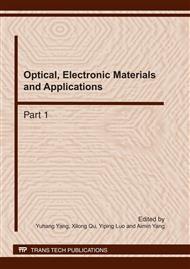[1]
Deb, K., Multi-objective Optimization Using Evolutionary Algorithms[M], John Wiley Sons, Ltd, (2001).
Google Scholar
[2]
Haug E.J., Arora J.S. Applied optimal design: mechanical and structural systems [M]. John Wiley & Sons, New York, (1979).
Google Scholar
[3]
Mahfoud S.W. Niching Methods for Genetic Algorithms, IlliGAL Technical Report 95001, Illinois Genetic Algorithms Laboratory, University of Illinois, Urbana, Illinois, (1995).
Google Scholar
[4]
Holland, J., Adoptation in Natural and Artificial Systems[M], University of Michigan Press, 44~50: (1992).
Google Scholar
[5]
Xichun Liu, Shouyi Yu. A genetic algorithm with fast local adjustment[J]. Chinese Journal of Computers, 29(1): 100~105 (2006).
Google Scholar
[6]
Jingjun Zhang, Wei Cui, Nan Wang. Niche genetic algorithm for optimization deign of dynamic parameters of rigid multibody systems[J]. Chinese Journal of Mechanical Engineering, 40(3): 66-70(2004).
DOI: 10.3901/jme.2004.03.066
Google Scholar
[7]
Chandramoulli T. Application of simulated annealing for optimization of the lateral dynamicsbehavior of an automobile[M]. MS Thesis, Clemson University, (2002).
Google Scholar
[8]
Xiaoming Dai, Chao Xu, Xiangyang Gong, Huihe Shao. Convergence Analysis of Parallel Genetic Algorithm and Its Application to Optimization[J], Computer Engineering, 28(6): 92~95, (2002).
Google Scholar
[9]
Zeke Wang. Simplicial fixed points algorithm. press of national university of defense technology[M], (1993).
Google Scholar
[10]
Hiroshi N. Chikahiro T. Hideki A., An Efficient Learning Algorithm for Finding Multiple Solutions Based on Fixed-Point Homotopy Method[J] , Proceedings of International Joint Conference on Neural Networks, Montreal, Canada, (2005).
DOI: 10.1109/ijcnn.2005.1555985
Google Scholar


